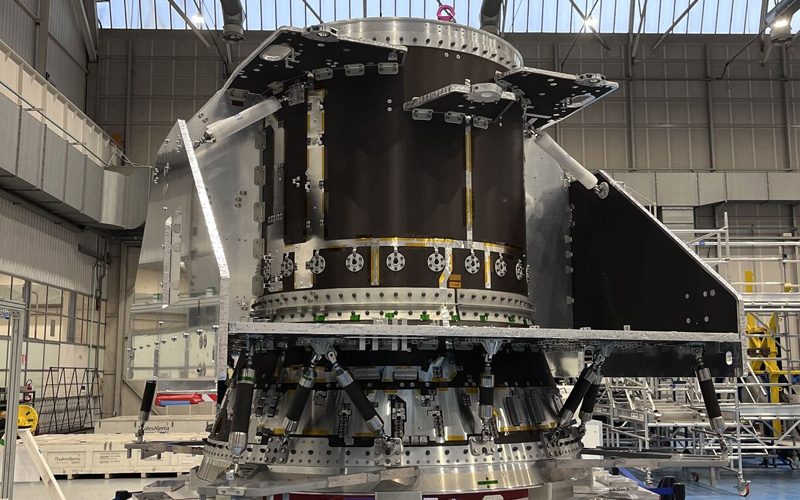
Thales Alenia Space has completed the Orbit Insertion Module for the Earth Return Orbiter, which will ferry samples from the surface of Mars back to Earth.
The Earth Return Orbiter is the European Space Agency’s main contribution to NASA’s Mars Sample Return mission. A €49- million contract to build the spacecraft was awarded to Airbus Defence and Space in October 2020. That same month, Airbus signed a contract with Thales Alenia Space to deliver the spacecraft’s Orbit Insertion Module.
The Orbit Insertion Module will provide the Earth Return Orbiter with the thrust required to insert the spacecraft into a stable orbit around Mars. After the maneuver is successfully completed, the module will be separated from the spacecraft to save mass for its return to Earth.
In a 12 December update, Thales Alenia Space announced that the Proto-Flight Model structure of the Orbit Insertion Module had been completed and fully assembled. A Proto-Flight Model is hardware that serves as both a prototype and a flight-ready unit. According to the company, the module will now be subjected to a “Qualification Static Test”, which will verify that it meets its mechanical load requirements.
In July, Airbus announced that the development of the Earth Return Orbiter had reached a key milestone with the completion of its critical design review. The company confirmed that it was moving forward with the next stage in the spacecraft’s development, which includes the integration and testing of its various components.
While the development of the Earth Return Orbiter continues, the fate of the wider Mars Sample Return mission is unclear.
In October, NASA formed the Mars Sample Return Strategy Review (MSR-SR) team. The team was tasked with reviewing several studies from NASA and industry on ways to curtail the project’s ballooning costs and expedite its delivery. In its current form, the mission is expected to cost $11 billion, with samples from Mars returning as late as 2040. The MSR-SR team is expected to provide a recommendation on the mission’s “go-forward architecture” before the end of the year.




